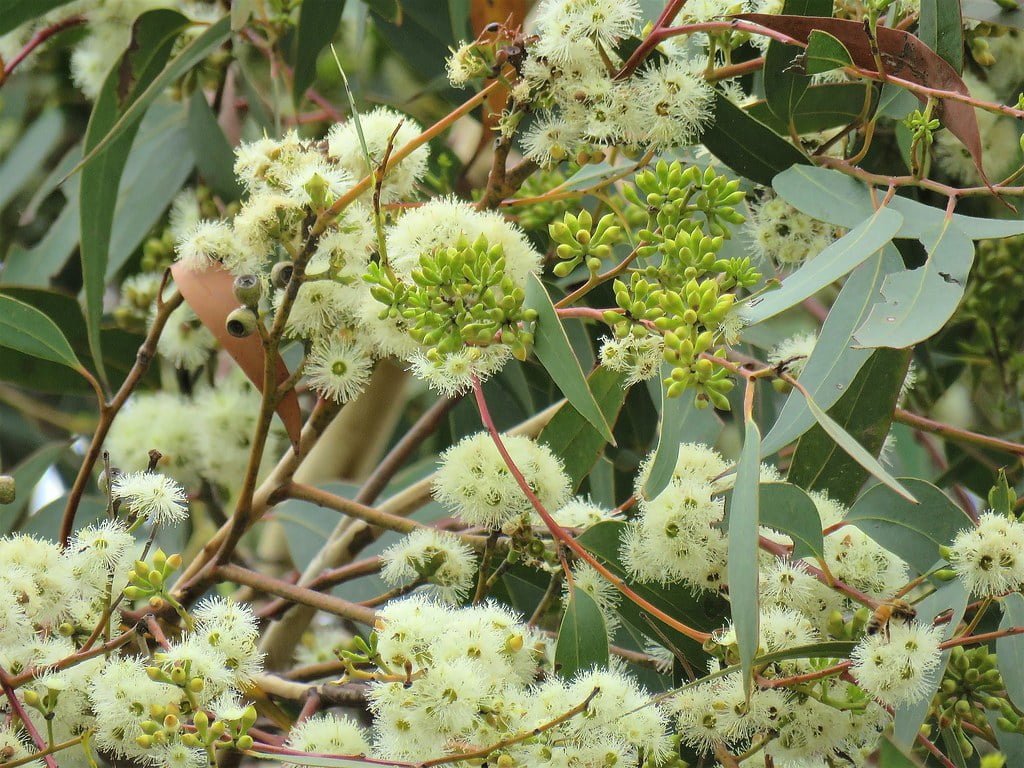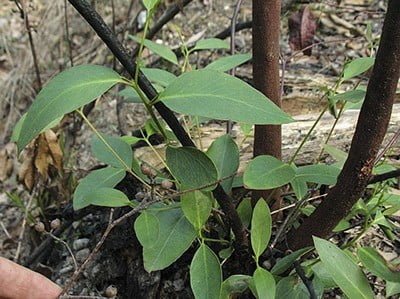
Eucalyptus piperita
Common name: Sydney Peppermint
I grow best: Full sun, Large tree 20m high
• Attracts birds, native bees and invertebrate creators
• Flowers December- January (Summer)
• Well drained or sandy soils
• Cultural uses
Looks like: A variable tree depending on exposure, soil fertility and fire disturbance history, as such it can be a very tall single trunked tree or a multi trunked shorter tree. Grows around 20m occasionally to 25m. The trunk has a thick stocking of permanent grey coloured fibrous bark often spreading well onto the lower limbs while upper branches are smooth and pale in colour often with long hanging ribbons of bark where the smooth sections begin. Leaves are dull in colour, concolorous and have an oblique base; they range from 10–14 cm long and 1–3cm in width. Foliage has a strong distinctive peppermint aroma. Flowering occurs in summer through December to January. Fruit are small globular capsules (urn shaped) held in tight clusters with valves enclosed below the disc/ rim.
Habitat & Distribution: NSW east coast and ranges extending from the Tuross River on the NSW south coast north to Nabiac NSW. A widespread forest and woodland tree in extensive near pure stands or as a co-dominant canopy tree on sandstone soil derived plateaus, hillsides and gullies. Sow seeds February/March in a sunny position in a greenhouse. Species that come from high altitudes appreciate 6 – 8 weeks cold stratification at 2 degrees. Pot up the seedlings into individual pots as soon as the second set of seed leaves has developed, if left longer than this they might not move well. Plant out into their permanent positions in early summer and give them some protection from the cold in their first winter. The seed can also be sown in June, the young trees being planted in their final positions in late spring of the following year. The seed has a long viability.
Traditional uses: Eucalyptus leaves are a traditional Aboriginal herbal remedy. The essential oil found in the leaves is a powerful antiseptic and is used all over the world for relieving coughs and colds, sore throats and other infections. The essential oil is a common ingredient in many over-the-counter cold remedies. An essential oil obtained from the leaves is stomachic. In large doses, oil of eucalyptus, like so many essential oils has caused fatalities from intestinal irritation.

